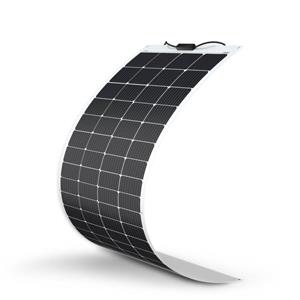Solar PV modules,its new materials bring new hope !
The common "blue glass" on house roofs, which is installed on roofs and street lights,we named solar panels. They convert sun light energy into electrical energy and providing clean, renewable energy for our lives.
Most of these "blue glasses" are polycrystalline silicon solar panels, whose main raw material is polycrystalline silicon. Polycrystalline silicon is a form of simple silicon that is crystallized from grains with different crystal plane orientations. The conversion efficiency of polycrystalline silicon solar panels is generally 15%-18%, which has the advantage of low cost and is widely used in daily life.
Solar panels are also available in dark blue or black. In fact, these solar panels are also made of silicon, but they mainly use monocrystalline silicon. Monocrystalline silicon is crystallized from grains with the same crystal plane orientation. The preparation process is more complex and the cost is higher than polycrystalline silicon. However, the conversion efficiency can reach 20%, and it is mostly used in the aerospace field.
At present, although silicon-based solar cells have been widely used in daily life, the band gap of simple silicon is fixed and the spectral range of absorbing sunlight is limited, resulting in low photoelectric conversion efficiency of solar cells.
However, beyond silicon, there is also a semiconductor material such as perovskite.
Perovskite is A material with a unique crystal structure, originally found in natural minerals, and now generally refers to a class of compounds with the structure of ABX3, where A is usually an organic cation, B is a metal ion, and X is a halogen anion. This structure gives perovskite materials a series of excellent photoelectric properties, so that they show great application potential in the field of solar cells. Perovskite materials can adjust the band gap by changing the composition of the material, and then regulate the wavelength range of the light absorption, and maximize the utilization efficiency of sunlight. It is precisely because of the adjustable band gap of perovskite materials, when constructing solar cells, perovskite materials with different band gaps or perovskite materials and silicon-based materials can be composed of laminated structures to improve the overall light absorption efficiency. In addition, perovskite materials can be prepared at low temperatures by wet process such as solution method, and the preparation cost is also low. As a representative of the third generation solar cells with low cost and high photoelectric conversion efficiency, perovskite solar cells have great application potential.




